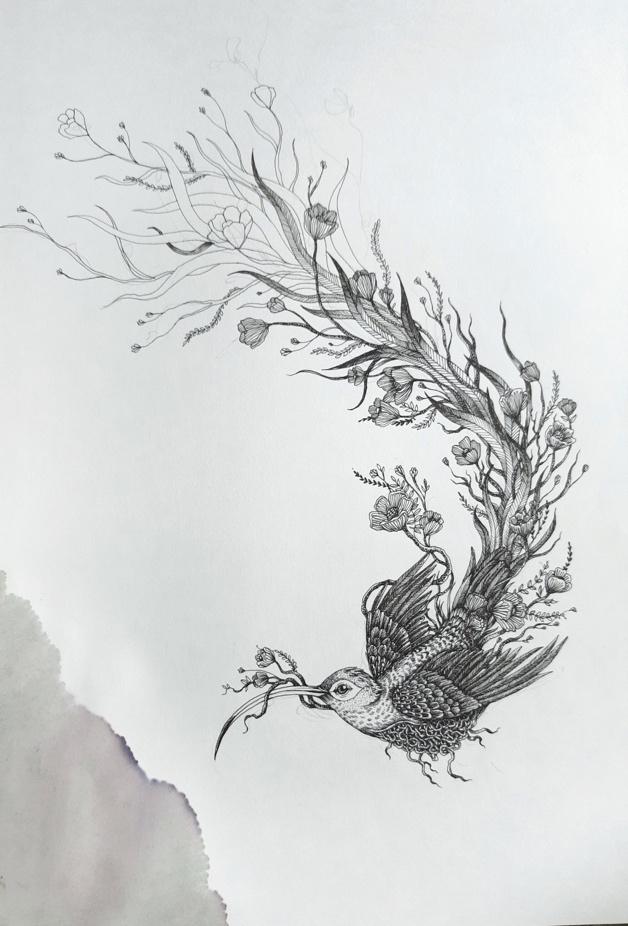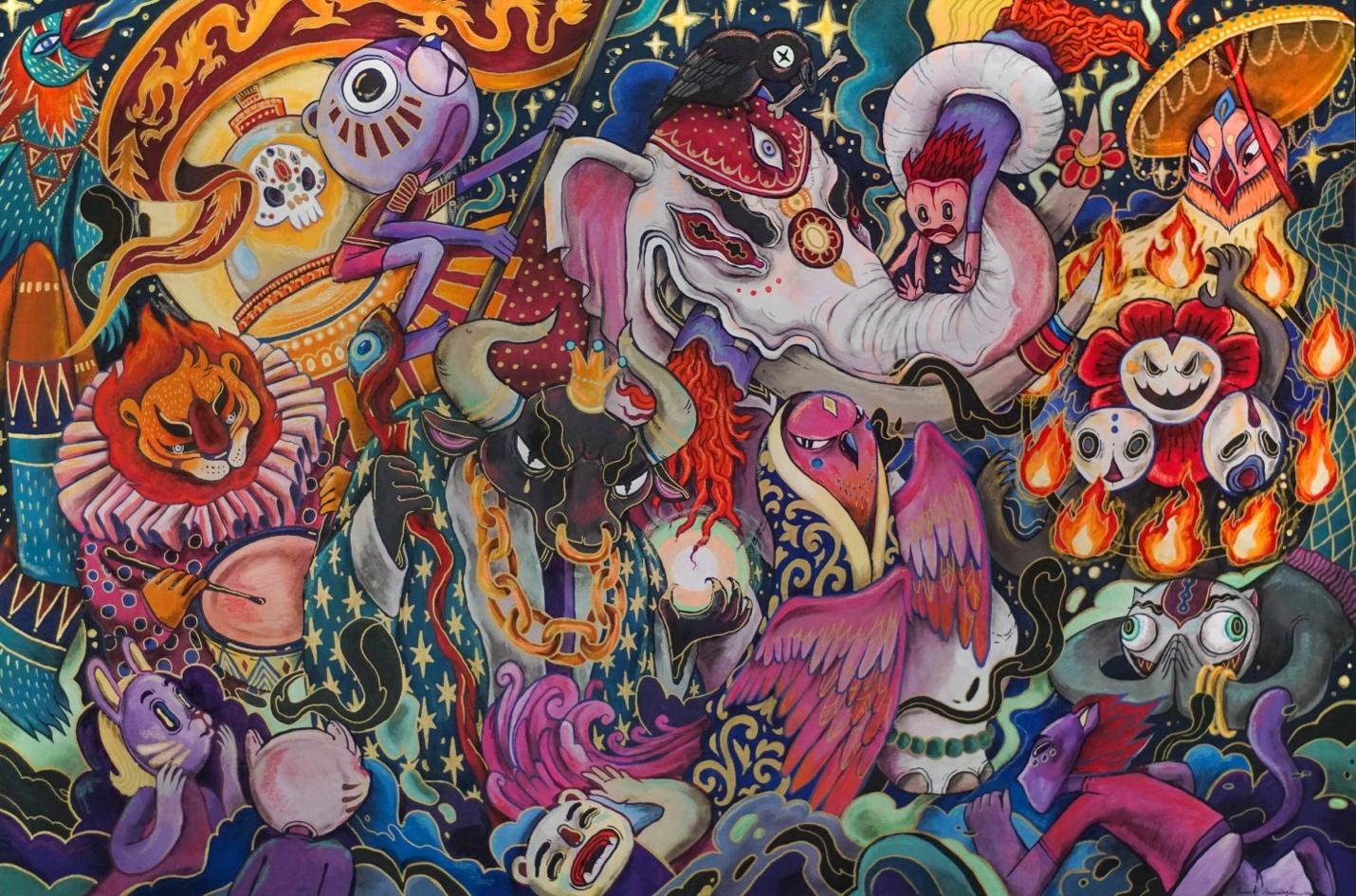Constructing Worlds: Ruwangi Amarasinghe’s Fantastical Forests
The forest holds many truths. To explore these narratives is to move towards a wealth of knowledge. These have been forgotten by some but not all, as many continue to grow and learn with the ecologies that surround them: forests, mangroves, mountains and rivers. Across geographies and temporalities, the worship of the ecological landscape and showing mother nature gratitude is often a facet of relationships with the forest. It is this practice that the artist and illustrator Ruwangi Amarasinghe explores in her work Reverence: to the Unspeaking. Presented at the entrance to the JDA Perera Gallery in Colombo, the work welcomed visitors to Way of the Forest, the latest edition of Colomboscope, held between 18 and 28 January 2024.

Beautiful Decay IV (2019. Ink on paper, 11 x 16 inches.)
Drawing from a lifelong interest in the natural world and an affinity with animals, Amarasinghe explores the world we live in through non-human counterparts. A graphic designer by training—and currently the head illustrator at Fold Media Collective—it was only in the last five years that she embarked on her artistic practice. Despite beginning with uncertainty about what to put on the large canvas she set up for her first work, Amarasinghe has since worked on a range of formats, including murals, children’s books, posters, textiles and spatial designs. Though she attempts to separate her commercial work from her artistic practice, there exists a common vocabulary that brings them together. Her practice—from more recent pieces such as Home Sweet Home (2023) and through earlier work Demon Parade (2021) and long running works such as the Space Motel (2015–ongoing)—explores worlds far beyond. Drawing inspiration from the detailed paintings of her uncle Prasanna Weerakkody, as well as her love for surrealism and fantasy, Amarasinghe’s oeuvre continuously explores parallel worlds of humanoid flora and fauna. The artist opens a window into a new world through her work, a world she created to understand the one we traverse. She views herself as a storyteller of this world, observing behind the scenes, getting to know the characters, and bringing their lives onto paper, canvas and screen.

Demon Parade (2021. Acrylic and mixed media on canvas, 36 x 54 inches.)
Reverence looks at this very fantastical world that Amarasinghe has created to explore the veneration of the forest in conjunction with the theme of Colomboscope. The author’s first encounter with this multimedia work was one of surprise and awe, and these feelings persisted. Figures travel with offerings for the forest, which are given in silence and are bountiful. In this universe brought to life, the artist delicately showcases the balance across the many faces of the forest. The forest is benevolent and kind, but not without the sinister. Simultaneously beautiful and overwhelming, it is for worshippers, spirits, flora, fauna, water and light. Standing in front of Reverence demands looking closely. One is invited to silently explore every corner of the canvas, walking through the forest, encapsulated by all that it is and all it could be.

Reverence: to the Unspeaking (2023. Acrylic and mixed media on canvas, 5 x 7 feet.)
Placed next to the curatorial note for Colomboscope, Reverence beautifully primed visitors to spend time with the exhibition by looking diligently, where a glance would not suffice. Amarasinghe sets the tone for an exhibition that is to be walked through slowly and patiently, as if one is walking through the forest, at peace. The ways to the forest are many, the ways of the forest are even more. The many rooms, floors, gardens, and trees of artwork and programming of Colomboscope speak to the diversity of relationships between the natural world and its inhabitants. Curated by Hit Man Gurung, Sheelasha Rajbhandari and Sarker Protick with Natasha Ginwala as artistic director, and assistant curator Vidhi Todi, Way of the Forest explored the relationship between ecologies and human beings through the work of over forty artists, numerous events, workshops and film screenings. The curatorial team effortlessly brought together multiple locations—the JDA Perera Gallery, the Barefoot Gallery, the Public Library Garden, and SNAFU—to create a fluid, yet embodied, experience.
Not only are viewers gazing over Reverence, an art viewing ritual that nears the eponymous act, but that gaze is returned. Nature is not simply observed, it watches back too. Knowing and seeing are intrinsic to the natural world, as is the veneration of nature. In the coming years, I hope for the world we see through Amarasinghe’s work to grow and expand, allowing us a lens into the possibilities for our relationships with the ecologies that surround us.
To read more about this year’s edition of Colomboscope, revisit Pamudu Tennakoon’s reflections on the panel Seeding a Grove of Asian Solidarities.
All images by Ruwangi Amarasinghe, courtesy of the artist and Colomboscope.




